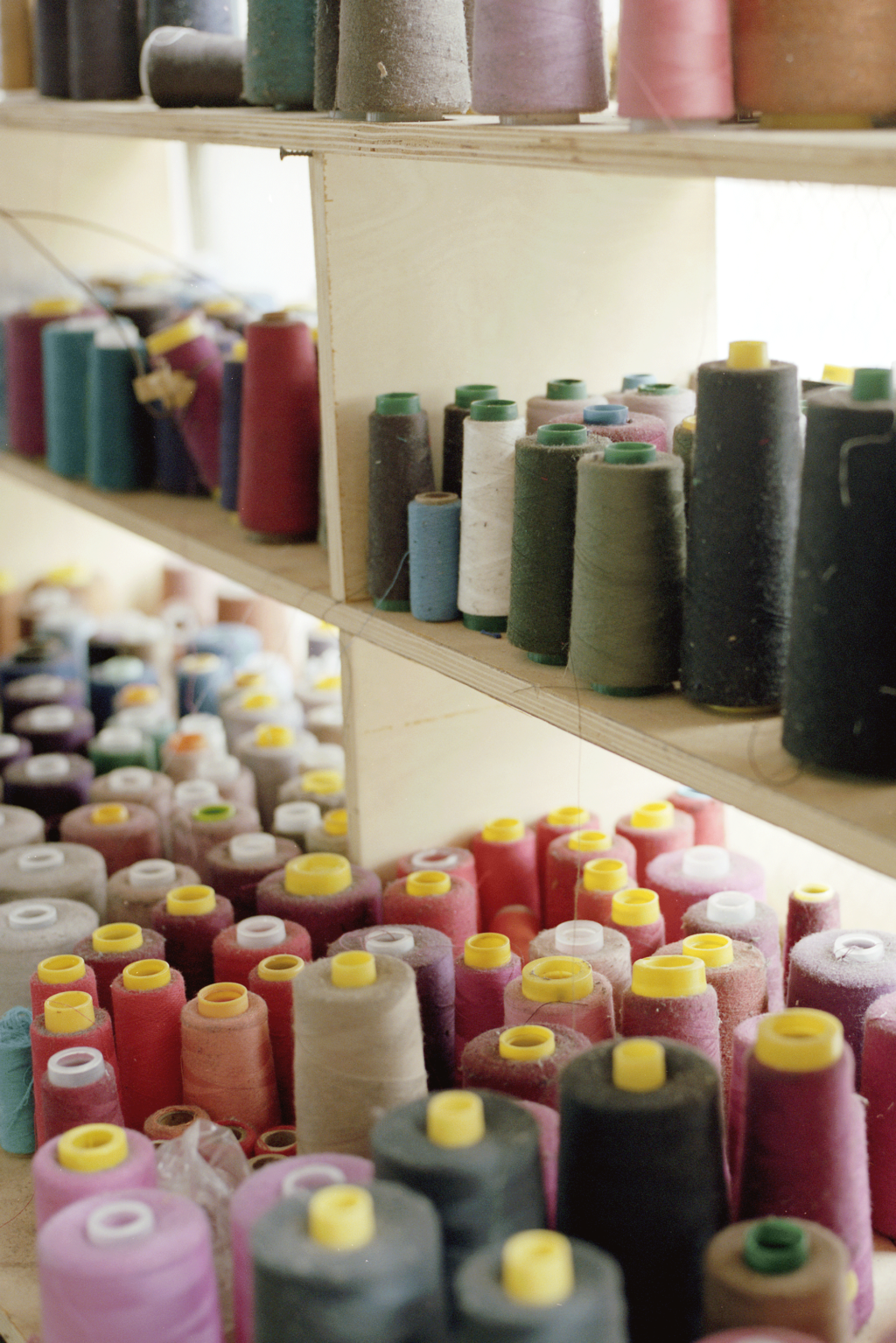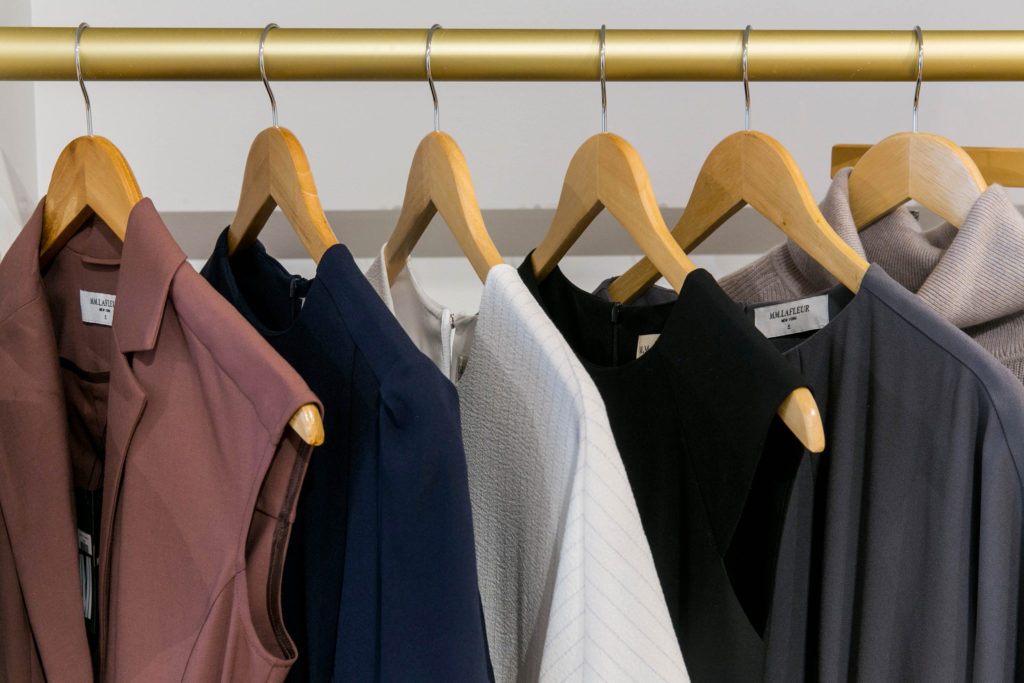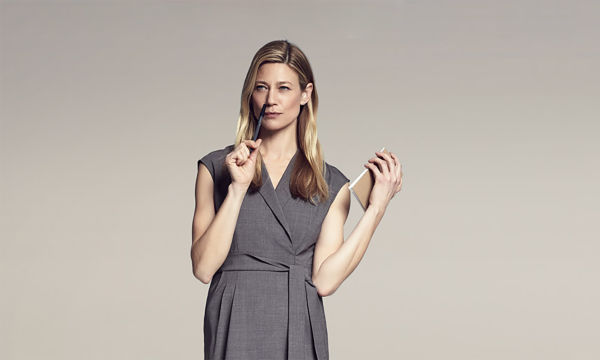7 Lessons I Learned While Building a Fashion Company
October 19, 2017 | Filed in: Humans of MM
Our CEO and Founder, Sarah LaFleur, knows a thing or two about what goes into starting a successful company—but she’ll be the first to admit that building a business is far from easy. Last month, Sarah spoke at the Shop.org conference, and shared seven valuable lessons from her own entrepreneurial journey. Read on for her key takeaways on founding a brand, in her own words.
Lesson #1: It’s okay to leave your job without having a clear next step—as long as you get a side hustle.
In 2011, I left my private equity job abruptly. I’d only been working there four months, but it wasn’t a fit. I gave my notice on a Friday, and two weeks later, I was unemployed. I didn’t have a plan and was worried that I had ruined my resume. When my paycheck stopped coming and my health insurance coverage ended, I was terrified. I realized then that I needed to create my own opportunity, and I started working on the business plan for MM.LaFleur. At the same time, I started tutoring students for the SATs at night. I was surprised at how much relief this side hustle brought me. It covered my expenses and allowed me to spend my daytime hours working on the business. Having a modest income stream (rather than relying on a fixed amount of savings) meant I could build MM.LaFleur at my own pace.
Lesson #2: Stop over-preparing. You can start a business without much experience, as long as you seek advice and are ready to learn.
When I was first starting MM, someone asked me if I had found a patternmaker. I responded: “I won’t need a patternmaker, since we’re only doing solid colors.” For context: A patternmaker is the person who creates the architecture of the dress—not someone who designs prints. But I didn’t know the difference when I started out. I realized then that I needed experts to fill in my many knowledge gaps. I had hustle, but I needed advisors.
The first person I sought was an experienced designer to help bring my vision to life. I went to a headhunter (actually, I went to five), and most of them shut the door in my face, telling me they had “Calvin Klein on the other line.” But one took a chance on me and introduced me to my current Co-founder and Creative Director, Miyako Nakamura. I convinced her to work with me by saying: “I don’t know much about fashion, but I’m not stupid. If there’s something I don’t know how to do, I will figure it out.”
Over the next few years, with Miyako as my guide, I spent almost every day in the Garment District, running in and out of factories, meeting with mill representatives, and going between my patternmaker and my sample sewer. I learned on the job, fueled by my own initiative and Miyako’s know-how.

Behind the scenes at one of the MM.LaFleur factories.
Lesson #3: Your product-market fit should be unique. Don’t compare yourself to others.
Having seen the success of hot e-commerce startups like Warby Parker and Bonobos, I thought that if I followed their formula of making beautiful products, pricing them reasonably, and selling them through an e-commerce site, we would see instant success. Well, it took two whole years to perfect our product: We were making pieces that would sell for $1200 at a department store, but we sold them for $250 through our direct to consumer model. Initially, we didn’t have the money to build a website, so we rented hotel suites and sold our pieces through trunk shows (invite-only sales). When our site did eventually launch, we excitedly waited for the orders to roll in. Instead, crickets.
We didn’t see any traction: No one was visiting our site, and we didn’t have any money to spend on marketing to acquire new customers. It was a painful realization that our product was quite different from eyeglasses or men’s khakis—it didn’t work to just brand MM “the Bonobos for professional women!” Our product was different, our pricing was different, our market was different, our customer was different. We didn’t know how to sell our dresses, and we struggled out of the gate. (See lesson #5 to learn how we turned things around.)
Lesson #4: If someone isn’t expressing unbridled enthusiasm about your business in the first meeting, don’t waste your time.
Soon after launching our site, we decided to fundraise and met with a few venture capital investors (VCs). Those conversations were some of the most painful I’ve ever had. Most VCs are men, and they didn’t understand the problem I was trying to solve for professional women.
I wasted a lot of time talking to people whose minds I thought I could change. A lot of early-stage investing is about gut instinct, and if they don’t get it early on, they probably never will. Also, if a VC says to you, “I’m going to have my wife try your product”—run. Just because his wife is a woman doesn’t mean she’s your target customer, and if he doesn’t understand that, he’s not the right VC.
Lesson #5: Constraint breeds creativity. Some of the best ideas are born when you’re working with very little.
About a year into launching our site, our sales were still lagging. One day, I walked into our inventory room, and saw that it was packed to the brim with product we were struggling to sell. I thought, “We are going to die under a mountain of dresses.”
In an act of desperation, my six-person team and I decided we needed to be more proactive about getting the customer to give us a try. We emailed them saying, “Can we send you a box of styles to try, and you can keep the ones you like and return the ones you don’t? You don’t have to pay anything upfront.” A surprising percentage of customers responded “yes” to that email, and we made more money in that one week than we ever had in one month.
That experience led to an epiphany: Our customer is too busy to shop. A typical e-commerce website is overwhelming to her. She comes home after a long day of decision-making at work, and the last thing she wants to do after putting the kids to bed is think about whether she’s a size 8 or a size 10, or whether gray will look better on her than brown. She wants to outsource that decision-making to someone else. So rather than expecting her to browse online, we developed a styling service just for her.

At MM.LaFleur showrooms, each customer works with a stylist to find pieces that work best for her.
Lesson #6: Sell to your customer on her terms.
Before our business took off, I met with an investor who knew the CEO of our biggest competitor. The investor asked this CEO, “What do you think about their clothes?” The CEO came up to me and rubbed the fabric of my clothes between his fingers. He replied, “All that matters is how you sell it.”
It wasn’t enough to get the product right. How we sold our garments mattered just as much as the products themselves. Thanks to that desperate moment in our tiny fulfillment center, we realized that what our customer needed was not just a beautiful dress, but also someone who served it up to her so she didn’t have to waste time deciding what to wear.
Our customer wanted service and she wanted us to help her save time. Once we realized that, we configured our whole business around serving her both online and offline.
Lesson #7: Starting a company is like swimming to an island.
The darkest days of my life were in the early stages of founding my company. The stories of successful founders are often told in retrospect, when it’s easy to connect the dots and make it seem like everything happened for a reason. For me, the decision to go out on my own and start MM really came at my lowest moment of confidence in my professional career. I felt like a failure. But I believed that I could become a good businessperson, and I got to a point where I said, “Let’s start this. I have nothing to lose.” Once I set out, I often felt that I was swimming to an island. Sometimes I could see it clearly; other times I felt completely at sea, and I thought about swimming back to shore. As we’ve grown, that feeling of uncertainty has never really gone away. I’ve learned not just to tolerate it, but to thrive on it. My motto today is the same as it was when I first started my company: “Just keep swimming.”

Sarah speaking at the 2017 Shop.org conference in Los Angeles.








